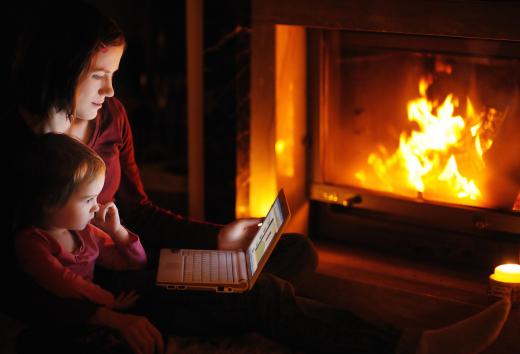Although there are a number of different types of chimney construction, the two most common types are masonry and manufactured chimneys. All chimneys must perform the main functions of carrying smoke from the house and feeding the fire with air. Those two basic tasks are fulfilled by both main chimney types, but getting an idea of each one's advantages and what makes them different is helpful when selecting a new chimney.
Masonry construction is one of the most common types. The resulting chimney is typically part of the structure. Materials range from brick to stone, with a clay tile liner to hold the materials together. This kind of chimney construction requires a baked clay flue lining for both easy cleaning and safety.

The other main type of chimney construction is the manufactured chimney, which is constructed in a factory and then transported to the house or building to be assembled. This type is usually made with metal and should be used with a solid fuel heater rather than natural gas. There are several specific types of manufactured chimneys, none of which require a liner.

The double-wall, mass-insulated chimney is made of two metal layers, with insulation between them. The insulation absorbs the heat inside the chimney, and the two sheets of stainless steel can contain any heat not absorbed by it. This is in contrast to air-cooled chimneys, which simply have air between the two metal layers. The fact that the air circulates helps the heat eventually dissipate.
Air-insulated chimneys look similar to the air-cooled type, except air movement is restricted in this chimney construction. This means that instead of the air drawing the heat away until it dissipates, it simply insulates it. There are also some chimney designs that combine parts of all these types of manufactured chimneys.
Masonry chimney construction is the kind most people likely think of when they picture a chimney. This type appears traditional, but is expensive compared to manufactured chimneys. The latter is easy to install, but often requires a factory-built fireplace, as well.
Homeowners who are having trouble selecting the right chimney should first look at their fireplace instruction book. Many fireplaces only work with a specific type of chimney. If the instruction manual has been lost, one can usually be found online or at stores that sell fireplaces. When it doubt, it is best to consult a professional in the fireplace or chimney field. Mistakes in selecting or installing a chimney can result in a broken fireplace or even a house fire.

